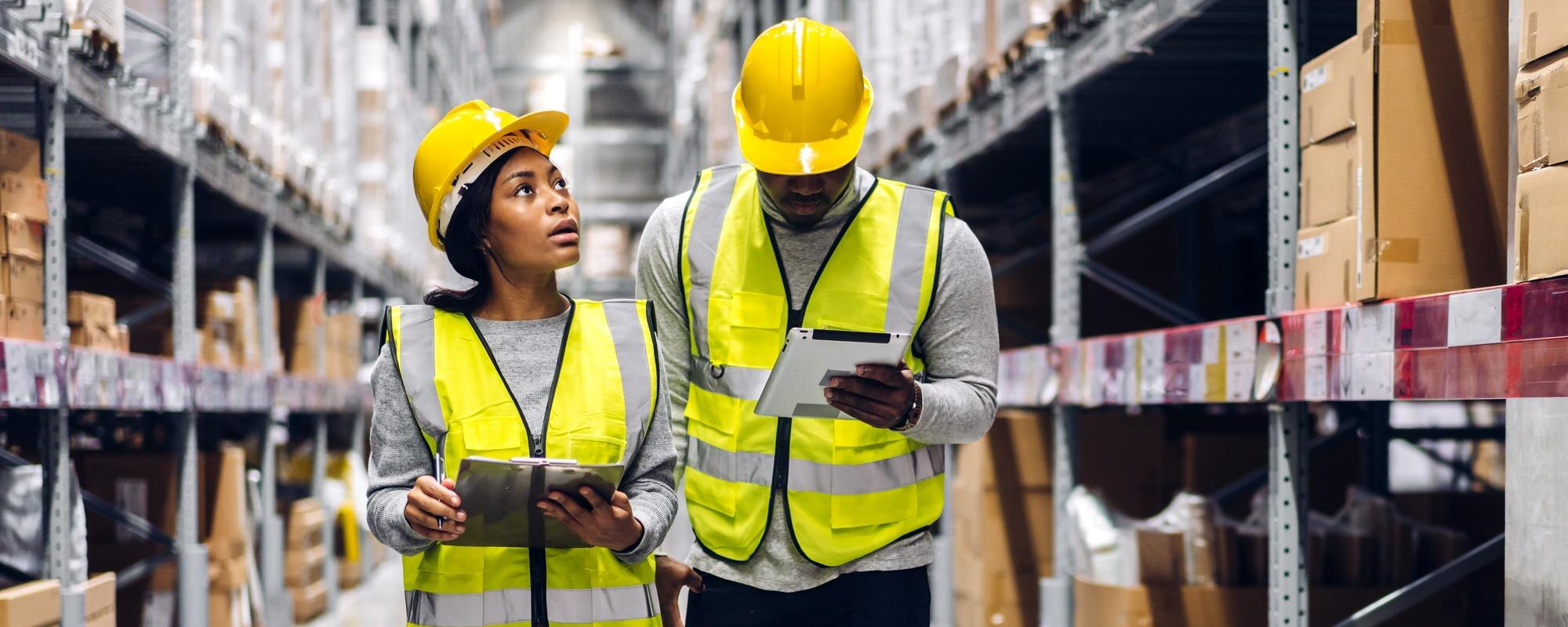Supply chain logistics issues are something every business has to deal with at some point. Delays, rising costs, and unexpected disruptions can throw even the best-laid plans off track.
Whether it’s a shipment stuck at a port or a sudden spike in demand, these challenges don’t just impact your operations, they affect your bottom line and customer relationships too.
Here’s the thing: understanding these supply chain logistics issues and addressing them proactively can make all the difference.
We will look at some of the biggest hurdles businesses are facing today and share practical solutions to keep things running smoothly.
It’s not about reinventing the wheel, it’s about finding smarter ways to stay ahead and adapt.
Let’s break it down and see how you can overcome these challenges and keep your supply chain moving.
Key Challenges in Supply Chain Logistics

Supply chain logistics issues have become more complex than ever, influenced by global events and economic shifts.
Geopolitical tensions, economic instability, and unpredictable disruptions can send shockwaves through supply chains worldwide.
These challenges aren’t just distant problems, they have a direct impact on businesses, leading to delays, higher costs, and strained operations.
Here are some common supply chain logistics issues and explore how they shape today’s supply chains.
1. Trade Contentions
In 2020, the US’s trade war with China created a lot of strife in supply chains.
New tariffs were put into place, creating a panic that led to companies working to shift supply lines out of China and into more trade-friendly countries.
2. Geopolitical Conflict
The Russia-Ukraine war has shown the entire world the damage that war in a far-off nation can do to supply chains everywhere in a globalized economy.
Shortages of oil, semiconductors, and grain created a ripple effect that resulted in unstable prices and supply chain hiccups across the world.
3. Global Health Crises
The magnitude of the supply chain repercussions related to the Covid-19 pandemic caught a lot of people by surprise.
The sharp drop and then rise in demand for products created issues with the flow of supplies, and worker and equipment shortages compounded problems.
4. Recession and other Economic Issues
Over the last decade, several countries like Greece and Venezuela, important parts of the global economy, have experienced their own internal crises.
As we’re staring down the potential for a global recession thanks to the economic rebound from the pandemic, global and local economic issues take on an even more important role in supply chain management.
5. Limited or No Supply
We’ve all seen this during the pandemic and beyond.
First, it was the toilet paper, then it was the meat and condiments. Eventually, it was big-ticket items like cars and electronics.
Events that create supply chain disruption can result in little to no supply of either a specific product or more generalized shortages.
6. Price Hikes
When products become harder to source, supply chain logistics issues often lead to significant price increases.
The basic laws of supply and demand kick in, limited availability drives costs higher. However, it’s not just the price of goods that rises.
Logistics costs, including transportation, warehousing, and labor, have also surged in recent years.
Fuel prices, driver shortages, and capacity constraints all add to the financial strain on businesses.
These rising costs don’t just affect large corporations; they trickle down to smaller businesses and, eventually, to consumers, making it essential for companies to find innovative ways to manage expenses and stay competitive.
7. The Need for New Suppliers
Geopolitical tensions and economic instability can disrupt supply lines from specific regions or countries, leaving businesses scrambling to find reliable alternatives.
Sudden trade restrictions, political unrest, or natural disasters force companies to secure new suppliers quickly while maintaining quality and cost.
This adds pressure to navigate new markets, vet partners, and renegotiate terms, all while minimizing disruptions to operations and customer service.
8. Reputational or Legal Ramifications
Trade conflicts and humanitarian concerns were creating serious supply chain issues in 2024.
Missteps in addressing these challenges can lead to major legal and reputational risks.
For example, if a company depends on a single supplier and that supplier is found to violate human rights, the business may face difficult decisions.
To safeguard its reputation and comply with regulations, it might need to sever ties with the supplier, disrupting its own operations.
These supply chain issues 2024 highlight the need for ethical sourcing and proactive risk management to navigate an increasingly complex landscape.
Navigating Supply Chain Issues Today
Supply chain issues today are more pressing than ever, with global disruptions and local challenges like extreme weather or political unrest creating significant hurdles.
Simple fixes no longer suffice; businesses must adopt broader strategies to build resilient supply chains.
By taking a top-down approach, companies can identify potential risks early and tackle them proactively.
Addressing supply chain issues today with a focus on mitigation and resilience can prevent small disruptions from becoming major setbacks.
Here are some practical strategies to future-proof your supply chain.
1. Work Towards 360 Degree Visibility
Global supply chain issues have made visibility more than just a buzzword, it’s a must-have for staying steady and adaptable.
Without full visibility, it’s tough to pinpoint past problems or prepare for future disruptions.
The solution lies in technology. By connecting your entire supply chain, you can address global supply chain issues with real-time updates and insights.
This not only helps you stay agile but also builds the resilience needed to keep operations running smoothly in an ever-changing landscape.
At Newl, we understand the importance of visibility in tackling global supply chain issues.
That’s why our logistics services are designed to provide real-time updates and seamless connectivity across your entire supply chain.
With our support, you can stay agile, build resilience, and keep your operations running smoothly in an ever-changing market.
1. Prioritize Resilience Over Economy
In an age where pleasing shareholders is king, it’s easy for companies to find the cheapest option and stick with it.
However, the cheapest option isn’t always the best option in terms of producing revenue or providing the best possible service to the customer.
To overcome the geopolitical and economic risk, companies must prioritize resilience over economy, or at the very least, learn to balance it better.
They can do this by diversifying suppliers (even if it means paying a little more), shifting operations closer to home (nearshoring), and investing in resilient technologies.
2. Plan for the ‘What Ifs’ with Redundancies
While the lean supply chain still has its place, redundancies are a necessary part of resilience.
Since it’s not a matter of if things will go wrong, but instead when and where they’ll go wrong, having a backup plan can be the difference between sinking and floating in today’s competitive marketplace.
Will redundancies cost more? Maybe. Will they require more effort? Almost definitely. If keeping your supply chain moving is a priority, redundancies are still worth it.
3. Bring in Experts to Solve Supply Chain Challenges
When tackling complex issues in supply chain management, sometimes the smartest move is calling in the experts.
Whether it’s navigating the global supply chain or finding ways to localize production for added resilience, having the right partner makes all the difference.
At Newl, we specialize in solving the toughest issues in supply chain management.
From end-to-end 3PL services to customized logistics solutions, we’re here to help your business stay agile and efficient.
Our expertise ensures that you can focus on what you do best while we handle the complexities of keeping your supply chain running smoothly.
Simplifying Complex Supply Chains with Newl
Navigating supply chain logistics issues can feel overwhelming, delays, rising costs, and unexpected disruptions often come out of nowhere.
Fortunately, having the right partner can make all the difference.
At Newl, we’re here to help you tackle these challenges with solutions that fit your business needs.
Newl’s Logistics and Warehousing Services
1. 3PL Warehousing
From storage to inventory management, we provide warehousing services with 35+ years of experts to ensure your products are stored securely and retrieved efficiently.
With our expertise, you can minimize delays and keep your supply chain running smoothly.
2. Custom Logistics Services
No two businesses are the same, and neither are their supply chain needs.
We provide tailored logistics services to tackle your specific supply chain logistics issues, optimizing your operations and enhancing overall efficiency.
With Newl by your side, you’ll have the expertise and support you need to overcome supply chain challenges and focus on growing your business.
Reach out to Newl and let’s simplify things together.
Final Thoughts
Supply chain logistics issues are a reality every business faces.
Disruptions, rising costs, and unexpected challenges are part of the game, but how you prepare makes all the difference.
Building resilience doesn’t have to be overwhelming. It’s about taking practical steps like improving visibility, planning for backups, and working with the right partners.
At the end of the day, a strong supply chain isn’t just about avoiding problems; it’s about being ready to tackle them head-on and even turning them into opportunities.
With the right mindset and expertise, you can keep things moving smoothly and stay ahead of the curve.
Frequently Asked Questions
1. Who is the world’s biggest exporter?
China, home to the second-largest economy globally, leads the world in exports. In 2022, China exported goods valued at approximately $3.59 trillion.
This dominance is fueled by its robust manufacturing sector, competitive pricing, and extensive global trade networks, making it a key player in the global economy.
2. Who is the world’s largest importer?
The United States tops the list as the largest importer of goods worldwide.
In 2022, it imported goods worth $3.2 trillion, reflecting a significant 14.6% increase from the previous year.
Among its top trade partners, China stood out, supplying 16.5% of the total goods imported by the U.S.
The U.S.’s large consumer market and reliance on diverse international goods drive this import volume.
3.What countries are export restricted?
Several countries face strict export restrictions due to embargoes or targeted sanctions.
Currently, Cuba, Iran, North Korea, and Syria are under comprehensive embargoes, prohibiting most trade and financial transactions without specific license authorizations.
Targeted sanctions focus on limiting the export of particular items, technical data, or software to certain nations, ensuring compliance with international regulations.
